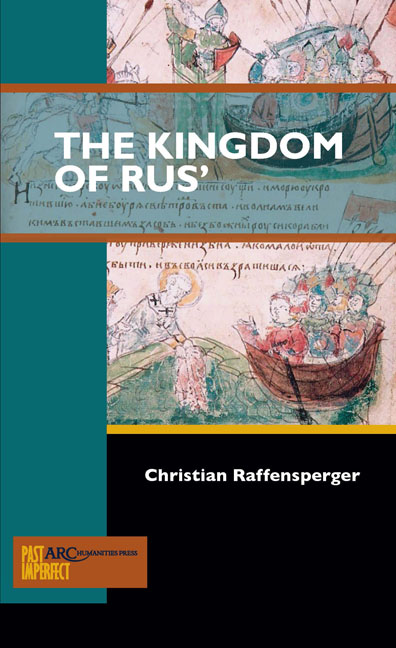Book contents
- Frontmatter
- Dedication
- Contents
- Acknowledgements
- Timeline of Events
- Introduction: The Problem with Names
- Chapter 1 The Place of Rus’ in Europe
- Chapter 2 The Historiography of the Translation of Kniaz’
- Chapter 3 Titulature and Medieval Rulers
- Chapter 4 What Was a Kniaz’?
- Chapter 5 Medieval Titulature and Rus’
- Chapter 6 Titles for Other Medieval Rulers in Rusian Sources
- Conclusion: Consequences and Resolution
- Further Reading
Chapter 6 - Titles for Other Medieval Rulers in Rusian Sources
Published online by Cambridge University Press: 14 January 2021
- Frontmatter
- Dedication
- Contents
- Acknowledgements
- Timeline of Events
- Introduction: The Problem with Names
- Chapter 1 The Place of Rus’ in Europe
- Chapter 2 The Historiography of the Translation of Kniaz’
- Chapter 3 Titulature and Medieval Rulers
- Chapter 4 What Was a Kniaz’?
- Chapter 5 Medieval Titulature and Rus’
- Chapter 6 Titles for Other Medieval Rulers in Rusian Sources
- Conclusion: Consequences and Resolution
- Further Reading
Summary
The Rusian sources are not particularly forthcoming when it comes to other medieval groups. The PVL tends to focus almost solely on the affairs of the Volodimerovichi, and thus titulature from throughout Europe does not make many appearances. There are, however, a few examples of other rulers discussed in the PVL that deserve mention to contextualize how the Rusians viewed the world, and specifically its rulers, around them.
Polish Rulers
The most often cited Christian neighbour is Poland, even though mention of it is relatively rare as well. As was discussed earlier, the titulature of the Polish ruler was complicated in that he was referred to as “dux” or “rex” depending upon his relationship with the German emperor and/or the papacy. This complication is minimized in the Rusian chronicles as the Polish ruler is uniformly referred to as “kniaz’” (for example, PVL, s.a. 996, 1102). The same Slavic word for ruler that the Rusians used for their own rulers applied to the Piast ruler of Poland. The Polish medieval sources were written in Latin, and as such, vernacular writing is extant only from later in history. However, it is understood that while the elite, especially the ecclesiastical elite, wrote in Latin, the language of the majority of the people, including the native-born Piast ruling house, was a Slavic one. Thus, it would not be surprising to find that the Piasts called themselves “książę” (the West Slavic version of “kniaz’”), or their people did, all the while they were labouring to be granted, or to claim, the title of “rex” from the Germans or the papacy. This is important to note not merely as a corollary to Rusian titulature, but as one of the inherent difficulties in studying medieval titulature. The vernacular language was rarely the written language, and utilizing a variety of sources from different places, including where the vernacular was written, helps create a more well-rounded picture of how rulers conceived of themselves in their own ways, as well as in the eyes of their neighbours. It also suggests that a wider investigation into medieval titulature might be necessary.
- Type
- Chapter
- Information
- The Kingdom of Rus’ , pp. 71 - 76Publisher: Amsterdam University PressPrint publication year: 2017



